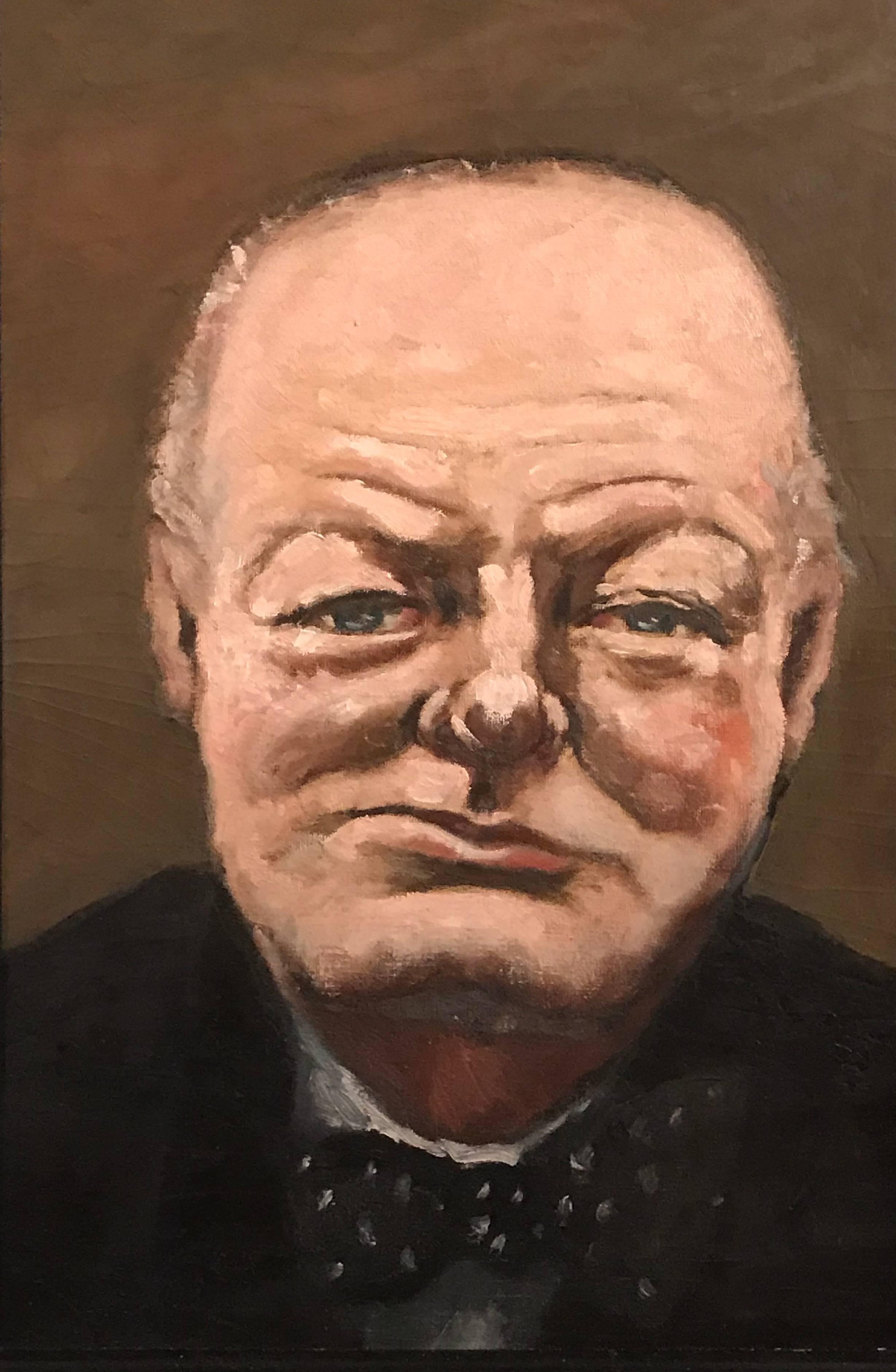

The digital file produced in the previous steps was printed onto a canvas only lightly prepped with gesso to keep, again, the feel and texture of the raw fabric. It was used both to correct the tones as well as to provide greater detail in certain areas, making the final re-creation a cross between this excellent image and the energy of real paint.

This image was used alongside the physical reconstruction to produce the final the re-creation. The image was kindly provided to Factum by the photographer’s son, Russel Burrows. It had been taken by the photographer Larry Burrows, who had used a colour chart in his documentation, thus making the colours obtained very accurate. By now, the team had also found another, better photograph of the portrait. Once the final painted version was ready, it was photographed at high-resolution. Some further details were added in paint.
This time, one of the re-creations done prior to the London visit was printed on raw canvas, immediately making a difference to the brown tones of the portrait. Once the team were back in Madrid, they used this highly-detailed information to guide and inform the re-creation. Various tests to recreate Sutherland's work It turned out that Sutherland was using a paint diffuser (not holding a cigarette as originally thought) in order to create the diffuse atmosphere of the painting, another fact that proved very useful in Factum’s ‘re-painting’. Schirenberg provided information even on the types of brushes Sutherland would have used he also pointed out one very interesting feature from an old photograph of Sutherland in front of the portrait. For Factum’s portrait painter, trained in Spain, it was very useful to better get to know this rich tradition. Finally, the team met with the artist Tai-Shan Schirenberg, who studied very much in the tradition of English portrait painting. The tailor was also able to provide information on the make of Churchill’s watch, what pocket he usually carried it in… All this was used by the team to better understand the textiles and other features of the portrait. The shop had kept samples of the materials used for the striped trousers worn by Churchill in the painting, as well as information on the cut of the jacket and other details, including the fact that the preparatory sketches had been done while Churchill was wearing what was apparently a 1950s ski-suit. Whilst in London, the team also visited Churchill’s tailor Henry Poole & Co. The team also looked the numerous preparatory sketches for various details it was clear that Sutherland had carefully studied every aspect of the sitter before very quickly producing a final version of the portrait, another reason to explain its intense vigour. The oils had been painted directly onto an un-primed, raw canvas, making them appear lighter and clearer than if they had been painted onto a white preparation (as had been done up until then at Factum). It was this oil study that proved one of the determining factors in the re-creation. The decision was taken to travel to the National Gallery in London, which keeps a number of the preparatory sketches as well as an oil study produced by Sutherland in the final stages of the work.


 0 kommentar(er)
0 kommentar(er)
